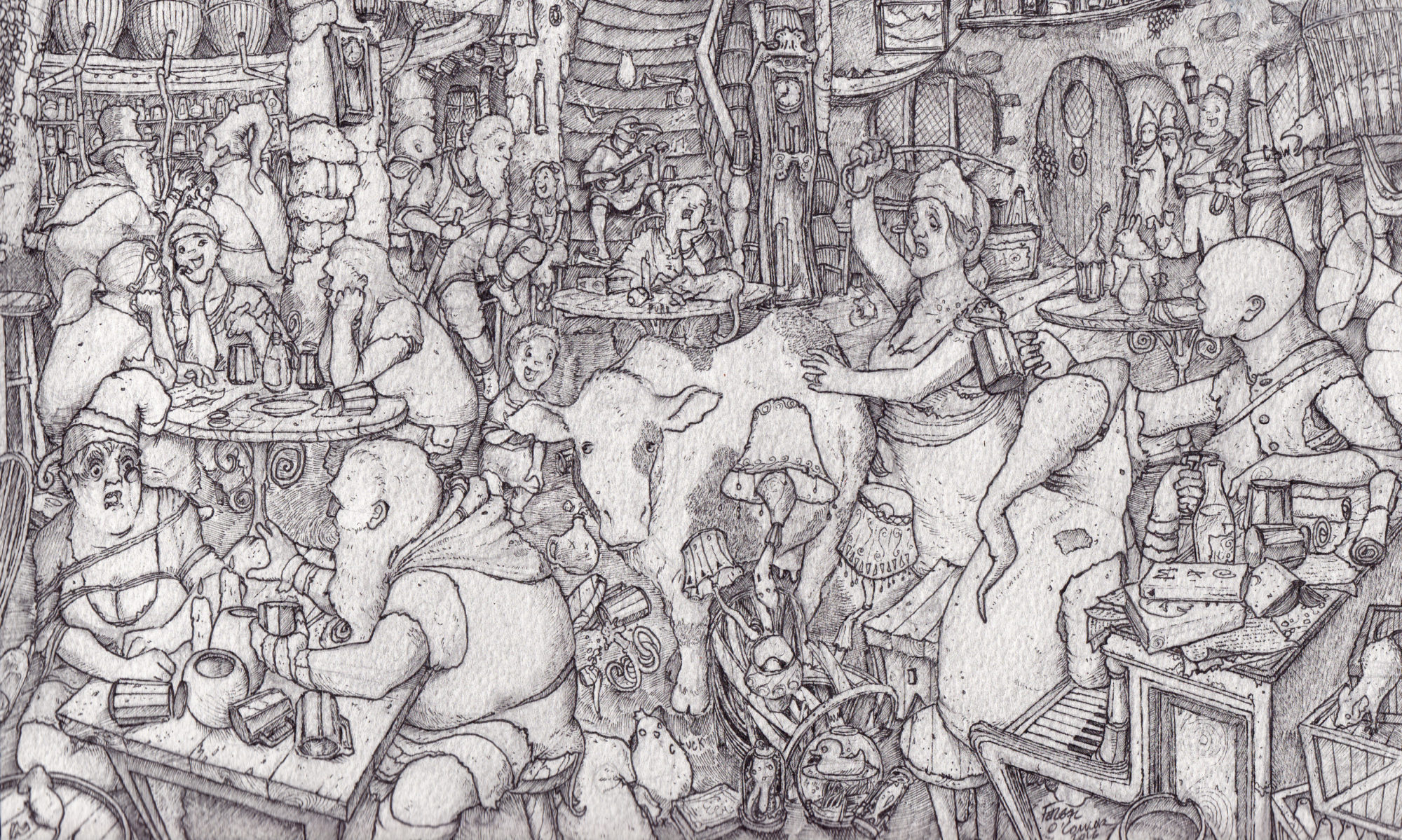The City of Ashirak, seen in yesterday’s map, is a canyon city between the lowlands and the high. A long embankment facing the prevailing winds from over the ocean makes climbing to the Doon plateau tricky under most circumstances. The winding canyon of Ashirak is one of the easier ways up and down. Because the ravine is bent in three places, winter snowstorms coming off the Fhysay and over the Bay of Dylath-Leen cannot blast the road. There is some measure of protection. Beginning as a trade point and financed by one of the ancient wonders of Pallas, the Clockwork Locks, Ashirak grew to financial prominence and expanded into conquest.
By law the Emperor resided at Ashirak to keep an eye on the source of money. However no one is so rich they can’t waste their money, and roughly one hundred years before Varad came to the Red Guard, the Baron of Dylath-Leen took the throne in a power play. In order to keep the Red and White guards from getting involved, the Baron provided plausible deniability in the form of political cover. To wit, the baron did not take the mantle of emperor. The emperor remained at Ashirak. It was merely a baron in Dylath-Leen.
The Baron’s power came from controlling the ocean trade. Between Dylath-Leen and Ashirak are two roads, the old and new. The old ran through the mountains, but this rendered it vulnerable to mountain interference. Recently the Baron of Dylath-Leen built the New Road. Staying safely in the lowlands, this allows him to control what gets to Ashirak and effectively irrigate or parch the Emperor’s fields of trade.
In order to maintain treaties with the highlanders, the fiction of sovereignty of the Ashirai Emperors is maintained.
